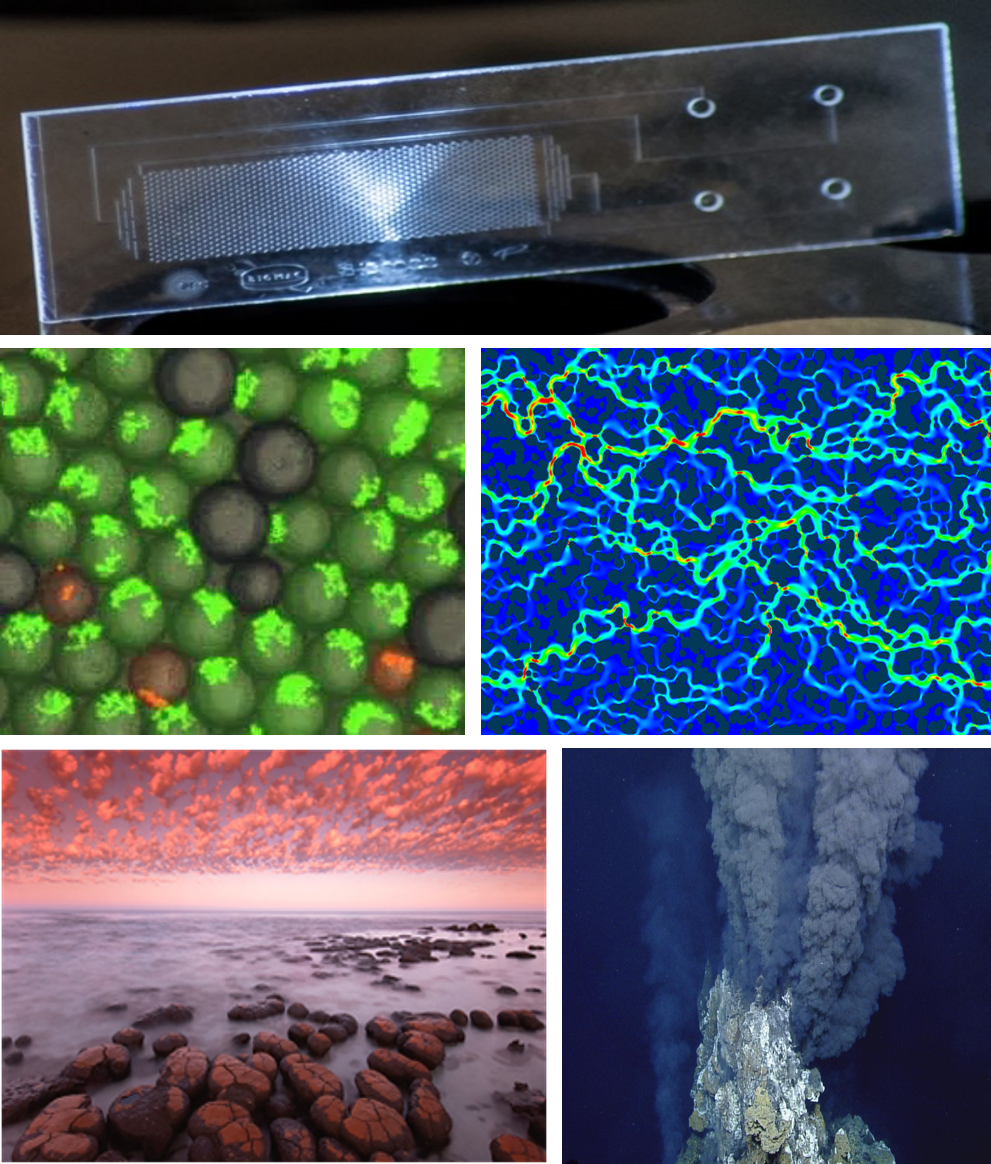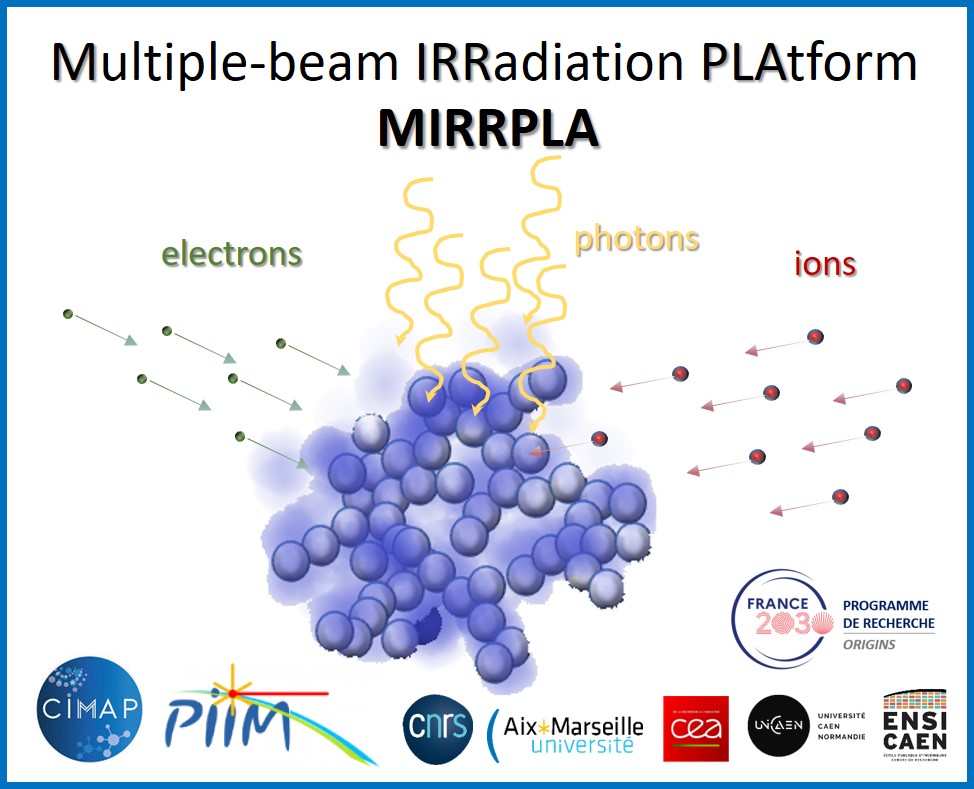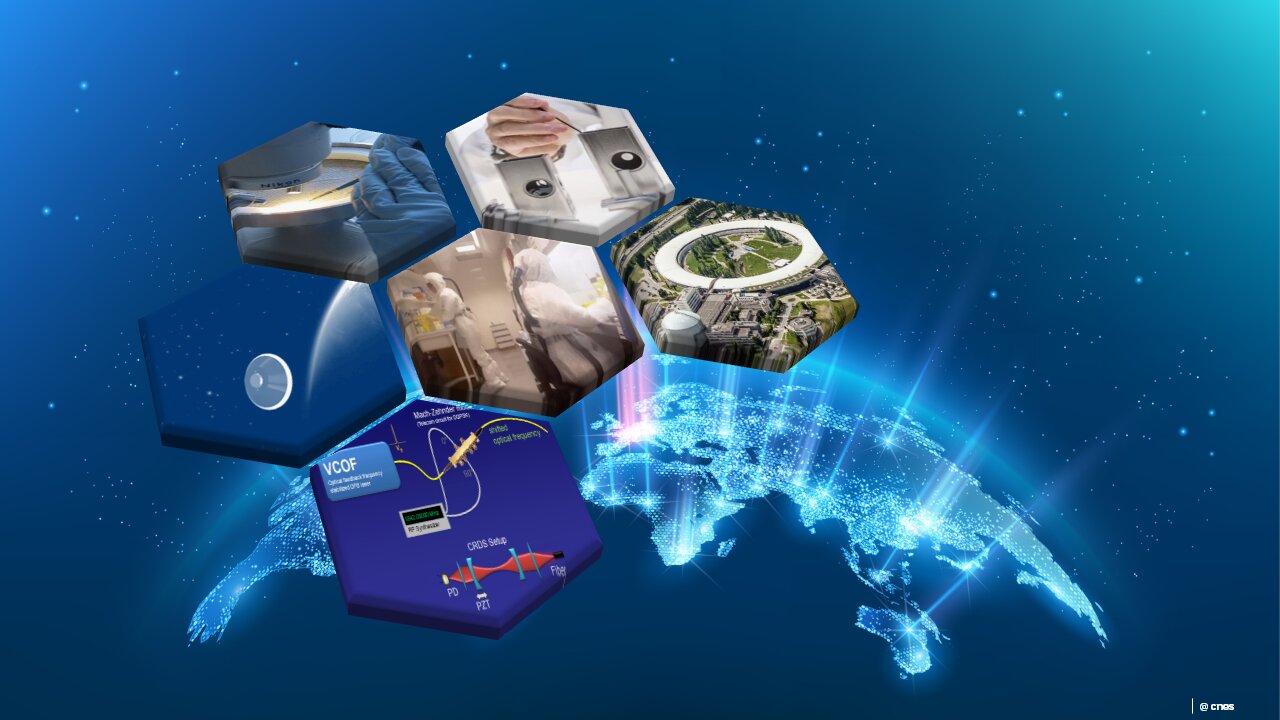
Microfluidics
Microfluidics
Overview
Microfluidic platforms for screening different scenarios for the origin of life on Earth and on candidate exoplanets/moons
P. NGHE (ESPCI Paris – PSL)
S. MARRE (ICMCB, Bordeaux ; CNRS, Univ. Bordeaux, Bordeaux INP)
The project aims to investigate the possibility of different scenarios for the origin of life in different conditions and environments. To date, no laboratory has succeeded in synthesizing a living system from elementary chemical compounds. To this end, we are developing powerful, innovative and rapid screening tools that recreate local planetary environments in a wide range of conditions, such as the aqueous alteration within certain meteorites, the liquid or supercritical water of lakes or deep-sea hydrothermal vents.
These tools can also be used to test a wide range of reaction mixtures in order to study key transition signatures for the emergence of life: the formation of biochemical building blocks (prebiotic chemistry), polymers (complexification of matter), compartmentalization, the emergence of autocatalytic reactions, and the implementation of evolutionary processes through natural selection.
In particular, compartmentalization most likely played a key role in the emergence of complexity even before the appearance of the first cells. In a prebiotic context, compartments may have been pores in rocks, suspended water droplets, puddles, or even vesicles or self-assembled aggregates. Our tools also simulate such compartments using drop microfluidic devices or artificially reproducing pores in rocks.
To develop
Our researchs
Evaluating RNA reactions in the protocell
- Heredity and variation in RNA reaction mixtures
- Coupling RNA reactions with self-assembling compartments
- Integration of RNA evolutionary dynamics in compartmentalized cycles
- Biomolecule design/generation cycles using artificial intelligence methods coupled with high-throughput molecular screening
Studying the emergence of natural selection in compartmentalized self-catalytic reactions
Implementation of autonomous evolutionary cycles of compartmentalized chemical reaction networks
Studying the self-organization of exogenous organic matter
| Evolution of exogenous organic matter under conditions simulating the aqueous environments of the early EarthScreening of experimental parameters coupled with ex situ analysis to identify molecular building blocks and/or oligomers/polymersAnalytical work to characterize the evolution of exogenous organic matter under the conditions of the aqueous environments of the early Earth. |
Study the thermodynamics of multi-component systems under DSV conditions
- Study of mass and heat transfer of hydrothermal fluids in DSV configurations
- Modeling thermohydrodynamics and geochemical behavior
Rapid screening of abiotic molecule synthesis
Prebiotic chemistry screening and geochemical catalytic reactions in porous media
Evaluating the genesis of complex molecules under DSV conditions
Study of the self-organization of complex molecules and the creation of a gradient during artificial or autonomous compartmentalization in a confined environment.
The Consortium
CNRS, ESPCI, Université de Bordeaux, Université Aix-Marseille
Scientific expectations
One of the main aims of PEPR Origins is to understand how life can appear and develop on a planet, including the Earth, icy moons and exoplanets. In this project, we will experimentally investigate one of the most critical and mysterious transitions, from small chemicals to evolving systems, ultimately compartmentalized in protocells or porous media. To link these transitions to results obtained for Earth or exoplanets by other PEPR projects, we will develop microreactors that mimic a wide range of physico-chemical conditions and enable detailed analysis of the local chemistry taking place in these reactors, as well as of the molecules generated and their eventual self-assembly. We will thus provide a set of tools for assessing whether the conditions deduced from the observation of planetary environments are compatible with those enabling the emergence of networks of self-organized chemical reactions, as measured in the laboratory.
Societal impacts
The high-throughput screening techniques to be developed as part of the project will enable the development of powerful directed evolution methods for chemistry and biology. Applications include the development of highly specific and robust enzymes for pathogen detection in medical diagnostics, the discovery of new pharmaceutically active molecules (e.g. therapeutic antibodies), and the directed evolution of synthetic organisms for bioproduction or bioremediation. More specifically by field :
- Medical sciences : Development of highly specific and robust enzymes for pathogen detection in medical diagnostics, discovery of new pharmaceutically active molecules (e.g. therapeutic antibodies), directed evolution of synthetic organisms for bioproduction or bioremediation.
- Microbiology / bioprocesses : New approaches to high-pressure microbiological research, e.g. for studies on interactions between anthropogenic pollution and deep-sea ecosystems, or on new metabolisms for new bioprocesses.
- Climate change and energy transition : New tools to study the bio-geochemical processes involved in the use of deep environments (oceans and underground) such as CO2 storage, energy storage and hydrogen production.
In addition, a number of companies have expressed an interest in letters of support for the microfluidic tools and approaches that will be developed and used as part of the MICROFLUDIICS project. These include Sanofi, HiFiBio (healthcare), Kapsera (microbiology), Vermillon and Total (energy transition). Potential collaboration contracts will be envisaged for knowledge transfer or the creation of start-ups, which could contribute to job creation. Innovations developed as part of the project may also lead to the creation of start-ups for the screening of high value-added biochemical systems.
Skills development
A community of 7 researchers and teacher-researchers, 4 permanent engineers as well as 4 post-docs, 2 PhD students and 1 engineer to be recruited as part of the project.


